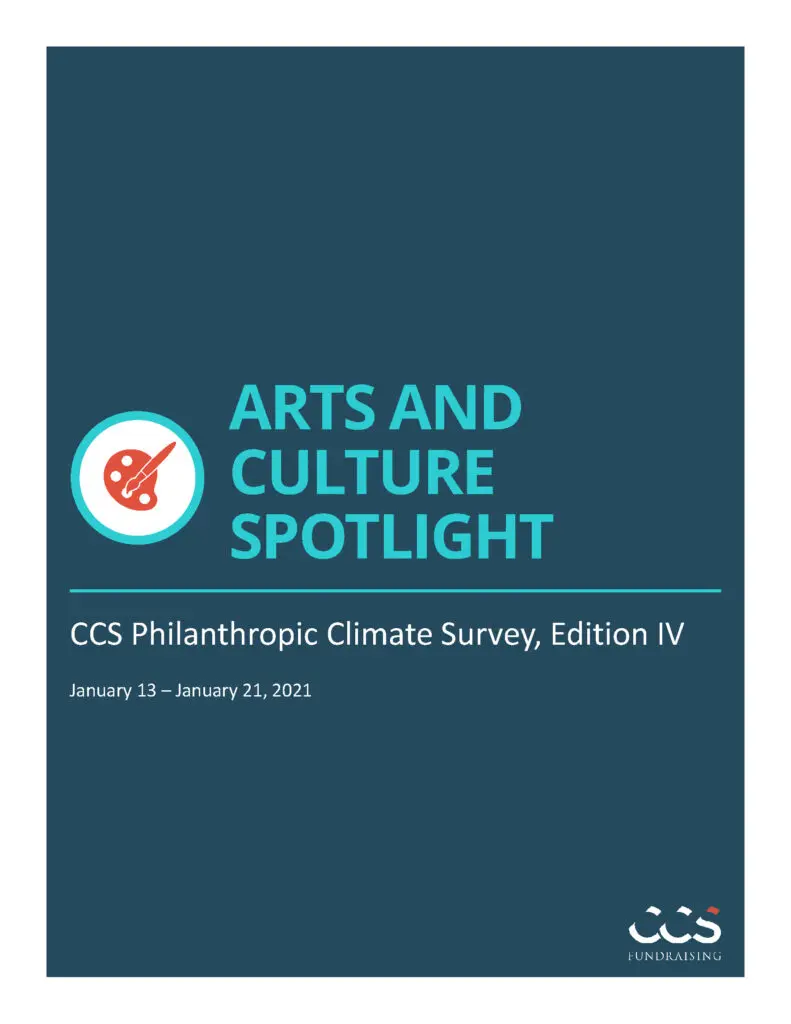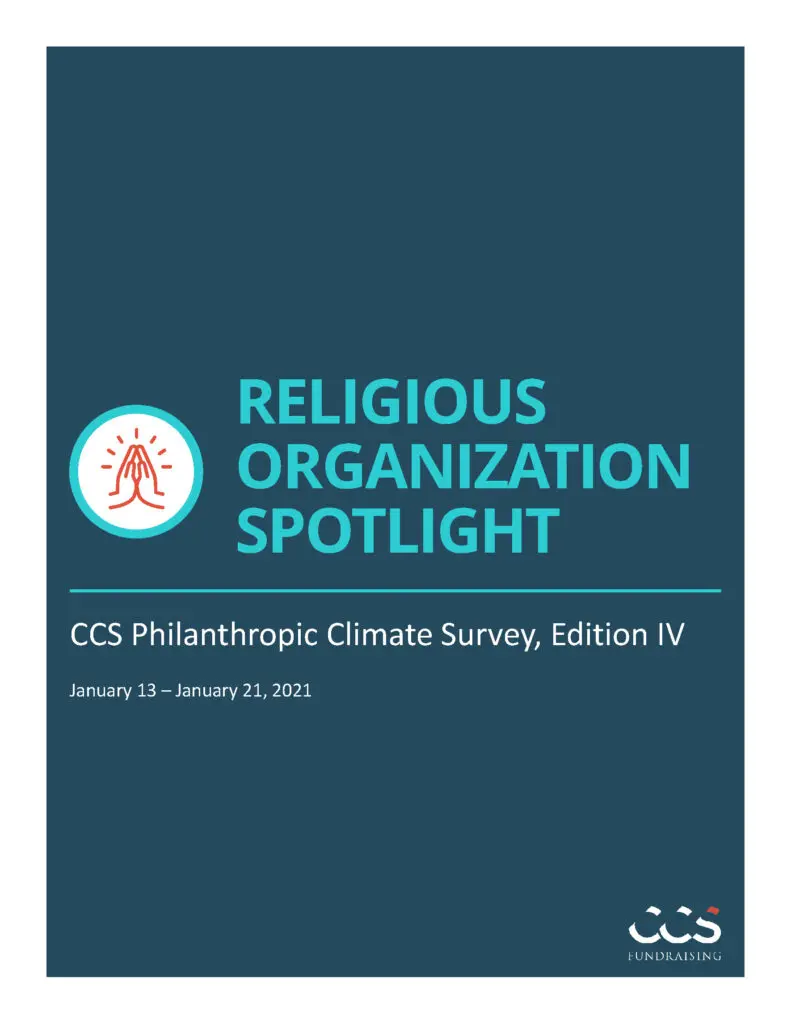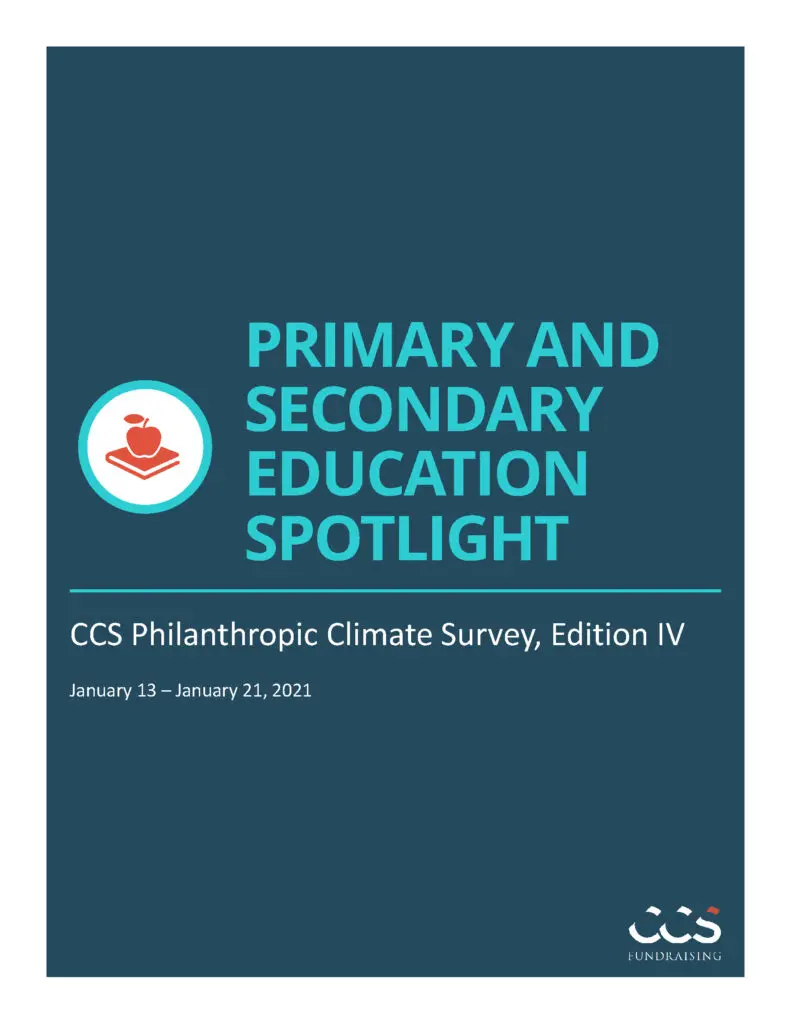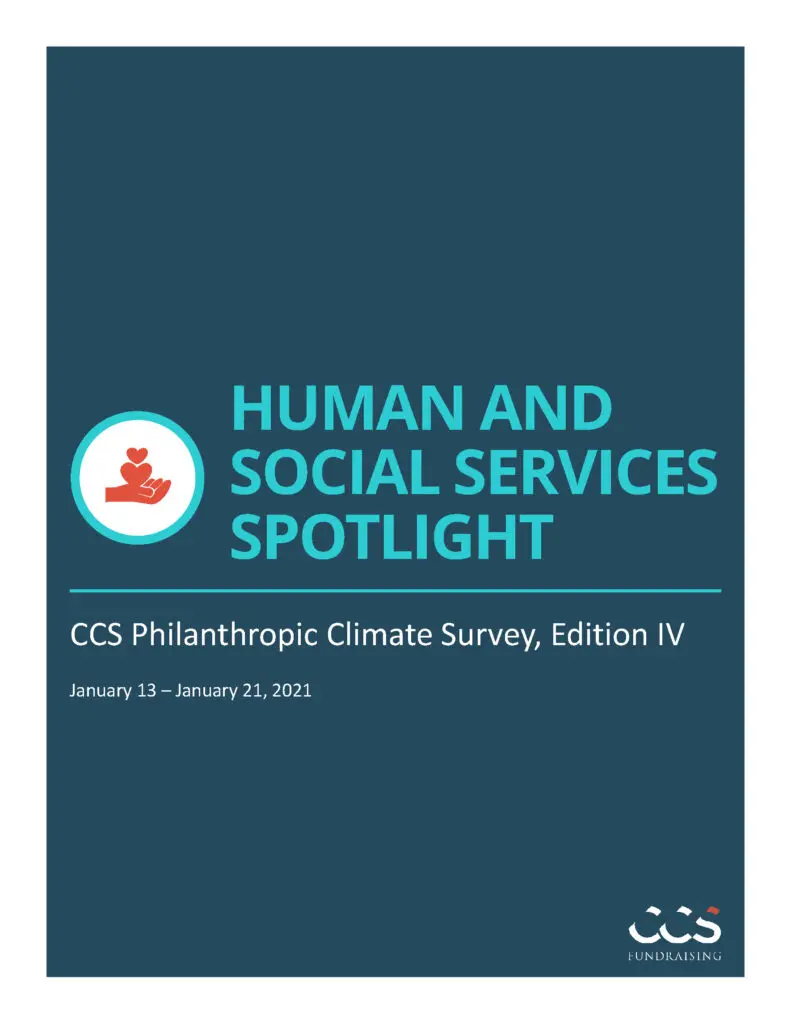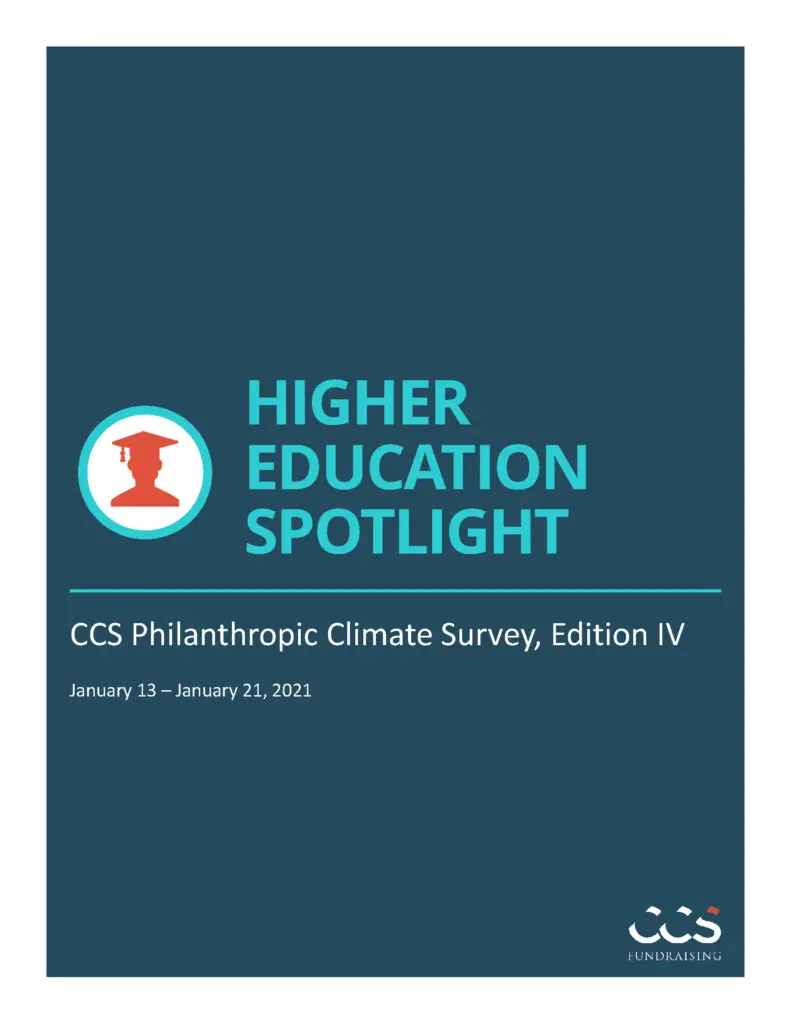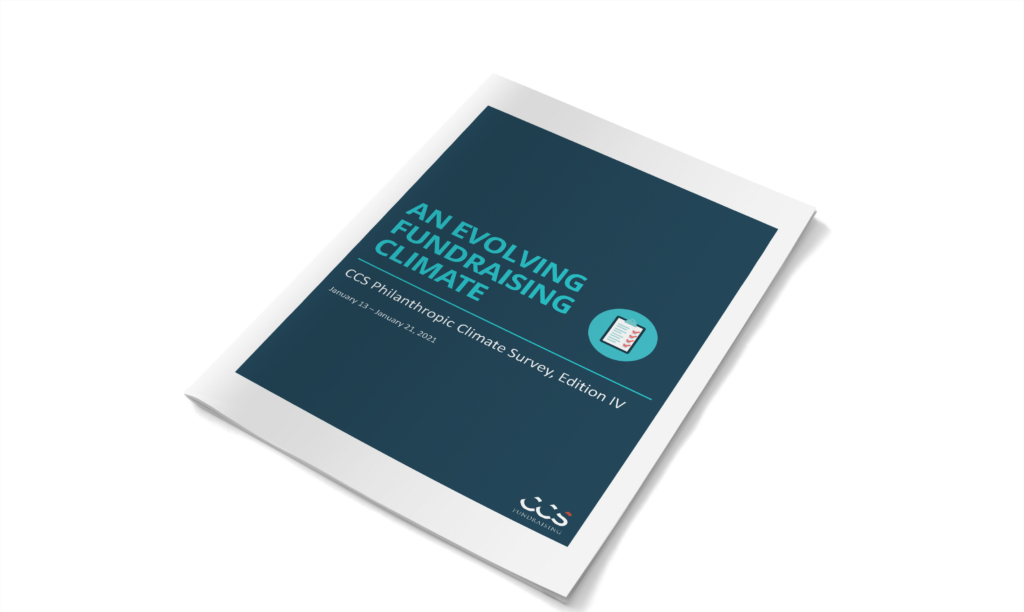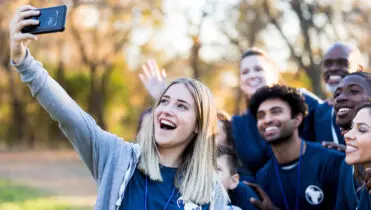The COVID-19 pandemic has brought unprecedented challenges and change to the philanthropic sector. Overnight, nonprofit leaders had to pivot from visionary plans for their futures to a laser-like focus on daily operations, responding to the pandemic and recalibrating their fundraising activity to navigate a rapidly evolving environment.
It’s been nearly a year since the start of the pandemic, and the nonprofit landscape looks remarkably different than it did at the start of 2020. Many organizations have made it through “crisis management mode,” adapted to the current moment, and now can embrace new opportunities for the future.
But the question remains: amid so much uncertainty about the future of philanthropy, how can nonprofit leaders set themselves and their teams up for fundraising success in 2021?
How has COVID-19 transformed the philanthropic landscape?
CCS Fundraising, a leading strategic consulting firm that partners with nonprofits to strengthen and support their fundraising programs, launched a three-part Philanthropic Climate Survey to assess how the COVID-19 pandemic affected nonprofit fundraising. The latest Fundraising Impact of COVID-19 research report presents September 2020 data from nearly 1,400 respondents representing nonprofits of all sectors and includes a comparative analysis of responses received in the May 2020 and June 2020 editions.
CCS survey results suggest that the pandemic’s negative impact on fundraising has reduced over time. Since the first report in May 2020, the proportion of respondents reporting either a modest or significant decline in fundraising in response to the pandemic decreased by 10 percentage points from 63% in May to 53% in September. At the same time, the proportion of respondents reporting an increase in fundraising rose by 14 percentage points, from 14% in May to 28% in September.
What changed between May and September? CCS’s research suggests that nonprofit leaders embraced new fundraising tactics, leaning into technology and developing innovative pathways to fundraise.
The biggest change we’ve experienced during the pandemic has centered on virtual methods of donor engagement. These include virtual galas or events and virtual briefings to groups of stakeholders. Employing multi-channel engagement strategies allows nonprofits to scale their programming and reach a broader audience. When surveyed in June, 31% of respondents indicated their organization held an online fundraising event. That figure jumped to 44% by September. Many organizations converted pre-existing events into a new virtual format, while others created entirely new virtual events that illustrated how their mission met this unique moment.
Furthermore, many nonprofit leaders have embraced virtual major gift solicitations as a part of their fundraising toolkit. Forty-three percent of survey respondents conducted a major gift solicitation via phone, video, or both methods during the pandemic as of September.
As the COVID-19 pandemic endures, CCS will continue to track changes in the philanthropic landscape. We are currently collecting data for our fourth Philanthropic Climate Survey iteration and look forward to sharing our new findings in February 2021.
How can we apply our experiences and lessons learned during the pandemic to position nonprofit leaders for a successful 2021?
The good news is that we are now in a more comfortable place where we can take what we’ve learned in 2020 and apply these lessons to the future. This will allow leaders to be more strategic, more innovative, and more deliberate in how they develop and implement fundraising plans in this new and evolving landscape.
Below are five recommendations for nonprofit leaders to elevate philanthropy, whether they represent small grassroots organizations or large institutions. These recommendations will prepare leaders with the knowledge and tools to maximize their philanthropic revenue as we continue to navigate a dynamic environment.
1. Plan for the unplanned: evaluate resources, best practices, and long-term operational strategies
As we have learned, the future is uncertain and organizations that are nimble and innovative in the face of adversity can meet the moment with strength and success. To that end, stay well-prepared with scenario planning and revenue forecasting. Prepared organizations will have steadier balance sheets in the face of unexpected events, so develop a short-term action plan and identify diversified funding streams that include both outright and planned gifts.
2. Re-envision event opportunities for a virtual setting
As we have seen, nonprofit leaders are reimagining donor engagement opportunities for a virtual platform. For the foreseeable future, these virtual engagement methods will be fundamental to fundraising activity and revenue generation. As comfort levels around virtual events continue to increase, leverage the special opportunities afforded by the virtual format to build momentum and scale your impact. Don’t be afraid to be creative and bold!
3. Embrace evolving donor communication that leads with empathy
Consistent and transparent donor communication has always been valuable. Today more than ever, it is important to show empathy, concern, and gratitude for your stakeholders. Additionally, donors may be more available to meet virtually, so embrace the new “face-to-face” donor meeting and gift request conversation.
4. Prioritize Diversity, Equity, and Inclusion (DEI) across your development practices
DEI is a vital lens through which to evaluate the stories you tell about your nonprofit and the communities you serve. It is also important to consider DEI relative to your internal practices and operational activity. Bringing diverse perspectives and talent to the table leads to more creativity and innovative ideas. Beyond helping to advance social change, this will translate to better performance and higher fundraising results.
5. Stay true to your goals while maintaining a flexible approach to fundraising strategy
At the end of the day, focus on your mission and why it’s relevant. Regardless of the communication method you use, reaffirm your purpose and the impact that philanthropic investments will have on the community you serve. Foundational fundraising principles still apply, and continued flexibility and adaptation may be needed.
As we continue to reimagine the philanthropic landscape, let’s focus on what we know, embrace opportunities for the future, and take action where we can to have the greatest social impact.
